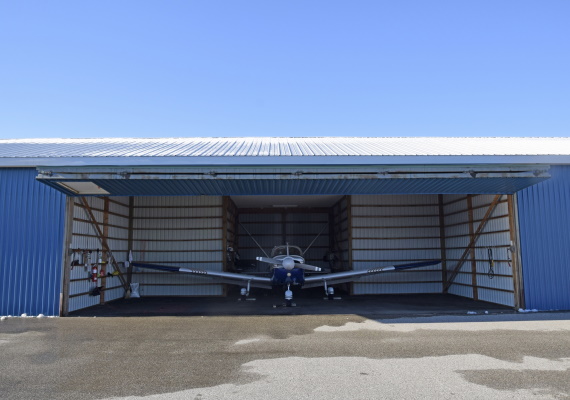
The TRUE Cost of an Accident
You are completing the third leg of what has been a successful business trip, and as the plane touches down, there is a loud “thunk.” The pilot successfully maintains control of the aircraft and brings it safely to a stop. Fortunately, no one is hurt, but the deer and the airplane suffer a different fate. A quick check by the local mechanic confirms the aircraft sustained heavy damage and is not airworthy. Even though you have a good insurance program in place, you will now learn the many costs of an accident that are NOT covered by insurance.
As you collect your thoughts, you realize you will need to get your business associates to their next destination (including yourself) and need supplemental lift for the next 60 days while your aircraft is being repaired. You recall the time you were in an auto accident; the insurance company paid for a rental car while your car was being repaired. You assume your aviation insurance policy might respond similarly.
The Good News:
The insurance company will pay for the direct losses as a result of the accident, including the damage to the aircraft and any property damage or bodily injury claims. In addition, if you operate a turbine or jet-powered aircraft (not for hire), your policy should contain certain ancillary coverages, including: ‘Extra Expense for Replacement Aircraft’ and ‘Extra Expense for Trip Interruption.’ The limits and wording of these coverages vary widely and are negotiable, but for the purpose of our example, we will assume you had the following coverage limits:
Extra Expense for Replacement Aircraft: $5,000 each day/$300,000 each loss-(normally the ‘each day limit’ x the ‘benefit period in days’).
Extra Expense for Trip Interruption: $15,000 per person (make sure this also includes the crew).
Now, let’s look at how the coverages apply to our accident. First on the list is getting you and your business associates to their destination. Enter ‘Trip Interruption Coverage’. This coverage will reimburse you for reasonable expenses incurred to transport each employee/person from the place your aircraft was damaged to the intended final destination or place they originally boarded your aircraft. This is normally accomplished using commercial airlines, the use of another company aircraft, or chartering another aircraft. The insurer will also pay for lodging and food during that time period.
Next, let’s address your previously scheduled travel plans for the 60 days your aircraft will be out of service. The applicable coverage for this is ‘Extra Expense for Replacement Aircraft.’ You can lease another aircraft and provide your own crew or charter an aircraft. Unlike your auto coverage, this only pays the extra expense of these operations over and above what it would have cost you to operate your own aircraft for the same trip, not to exceed the per-day limit.
If in doubt, clear all trips with the adjuster handling the claim to verify what is covered and what might fall outside of the coverage parameters.
The Bad News
Even with the best insurance program, there are multiple areas of “loss” that are not covered.
- Consider a worst-case aviation accident. The aircraft is destroyed, and there are multiple fatalities.
- Reputational risk –damage to your company’s reputation and good will. Many risk managers feel reputation/good will is their company’s most significant asset.
- The loss of productivity while key personnel are required to deal with the FAA, NTSB, local law enforcement, media, family counseling, depositions, and court attendance. The amount of time it will take to simply “deal with” the details of the claim’s process/paperwork is staggering.
- Possible damage to your future insurance program in terms of rating and insurability.
- The chance the loss amount will exceed the limits of insurance purchased.
- If the aircraft is repairable, the diminution of value caused by the loss history of the aircraft.
- Loss of key personnel & staff. Often, the most important players in a company are the ones utilizing the aircraft.
Conclusion
It should be apparent the cost of an accident is far more than meets the eye. This is huge! Now that you are aware, it should be crystal clear that your strategy is to go on the offensive and control what is in your power to prevent this from happening. Loss prevention is paramount. Safety initiatives, recurrent training programs for your pilots and mechanics, and emergency response plans are far less expensive than the potential damage of a covered claim. As good as insurance is, it simply cannot and does not cover everything. Consult with your AssuredPartners Aerospace broker to talk through this issue or any other coverage question you might have.

Related articles

Lorem ipsum dolor sit amet, consectetur adipiscing elit. Nullam elit quam, imperdiet sed ex quis, tempor luctus quam. Class aptent taciti sociosqu ad litora torquent per conubia nostra, per inceptos...

As aircraft values continue to increase, it’s time to consider what you’re insuring your plane for. Aircraft insurance is unique. While auto insurance is written on an actual cash value basis,...
